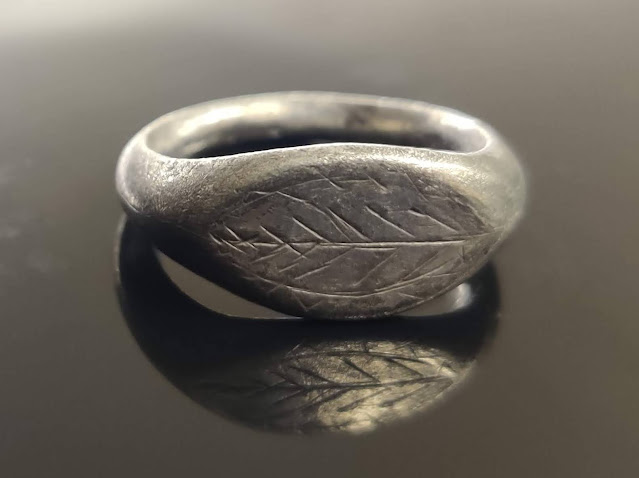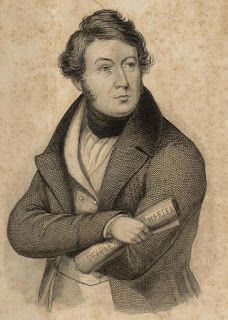The Roman finger-ring from Graig
Newport Museum and Art Gallery has finally received the Roman finger-ring from Graig. This was purchased for the museum by the Friends of Newport Museum and Art Gallery.
This finger-ring was discovered by a metal-detectorist in Graig, Newport. It features a palm branch design, which was widely believed to symbolise victory in the Roman period - in particular, victory over the ‘Evil Eye’. Such rings would have functioned as amulets, protecting the wearer from harm. The ring was declared Treasure due to its age and precious metal content. It was purchased by the Friends of Newport Museum and Art Gallery for Newport Museum, where it will be displayed in the near future.
see The Treasure Act Code of Practice (2nd Revision)
In England, Wales and Northern Ireland, all finders of gold and silver objects, and groups of coins from the same finds, over 300 years old, have a legal obligation to report such items under the Treasure Act 1996. Prehistoric base-metal assemblages found after 1st January 2003 also qualify as Treasure.
The Government recognises that metal detectorists have been responsible for discovering many objects of great importance for the nation’s heritage and this Act is not intended in any way to restrict the activities of responsible, law-abiding detectorists.
The Portable Antiquities Scheme encourages the reporting of archaeological items found by metal detectorists and other members of the public in England and Wales which are not covered by the Treasure Act 1996.
Silver finger ring fROM Graig community, Newport (Wales 17.27)
Circumstances of discovery
A silver finger
ring was found by a metal-detectorist whilst metal detecting in the Graig
Community, Newport, in late October 2017. It was found at a depth of about 4
inches (100 mm), in a ploughed field. The exact find spot including its National
Grid Reference recorded on the Treasure Receipt Form.
It was reported to Mark Lodwick, Finds Co-ordinator, Portable Antiquities Scheme on the 13th December 2017.
Description of the find states
Silver finger ring with plain loop and flat oval bezel. The bezel is decorated with an incised stylized palm branch; diameter 17mm; bezel 16mm (long) by 9mm (wide); weight 5.8g.
Evidence of Date
Good parallels for silver finger rings of this form can be found in the Roman period, second to third century AD. Cf. Blackburn area, Lancashire (Herepath 2005); York (Downes 2007); Devon (Barton 2008); West Lindsey, Lincolnshire (Daubney 2009); Braughing, Hertfordshire (Watters 2014); Hayton, Yorkshire (Richardson 2019).
References:
Barton, C (2008) PAS-8BB665: https://finds.org.uk/database/artefacts/record/id/212541
Daubney, A (2009) LIN-0B2D70: https://finds.org.uk/database/artefacts/record/id/260771
Downes, A (2007) SWYOR-6B2484: https://finds.org.uk/database/artefacts/record/id/191611
Herepath, N (2005) LVPL-3D0871: https://finds.org.uk/database/artefacts/record/id/101528
Richardson, I (2019) PAS-483CDA: https://finds.org.uk/database/artefacts/record/id/973602
Watters, J (2014) BH-B63C98: https://finds.org.uk/database/artefacts/record/id/601033
Conclusion by Evan Chapman Senior Curator: Archaeology, Amgueddfa Cymru - National
Museum Wales,
'On the basis of the above, it is my opinion that, as
the object is Roman, so more than 300 years old, and over 10% precious metal,
it is Treasure under Section 1 (1) (a) of the Treasure Act 1996.'
Author:
Evan Chapman, Senior Curator:
Archaeology, Amgueddfa Cymru - National
Museum Wales,
20th November 2019



Comments
Post a Comment